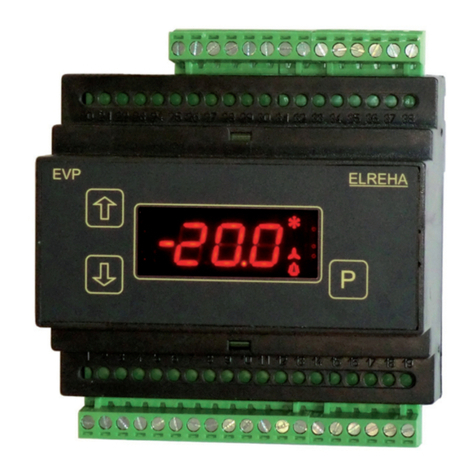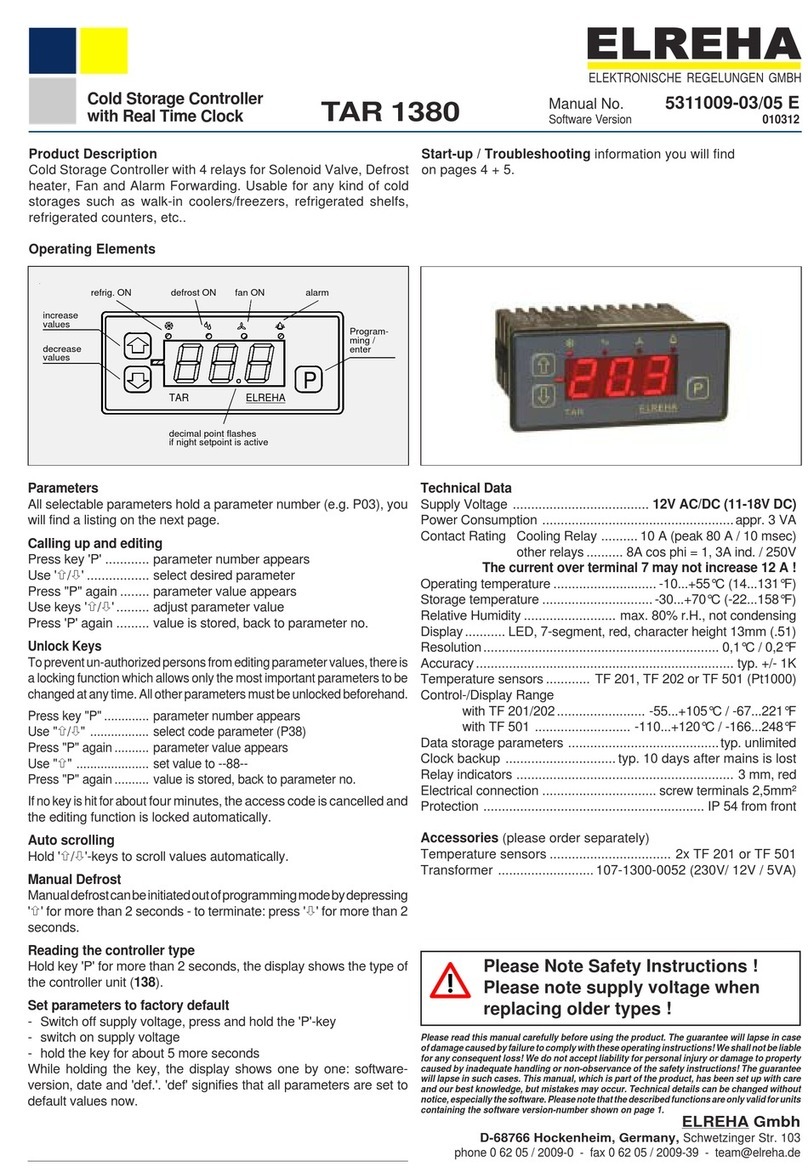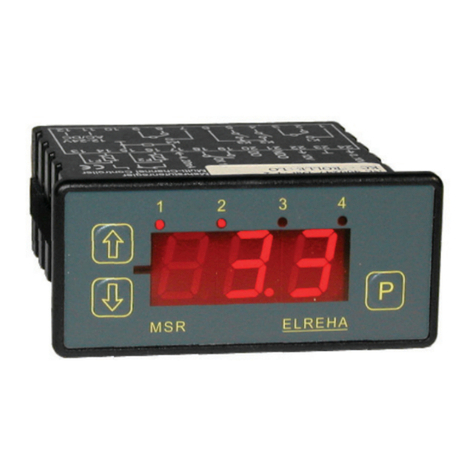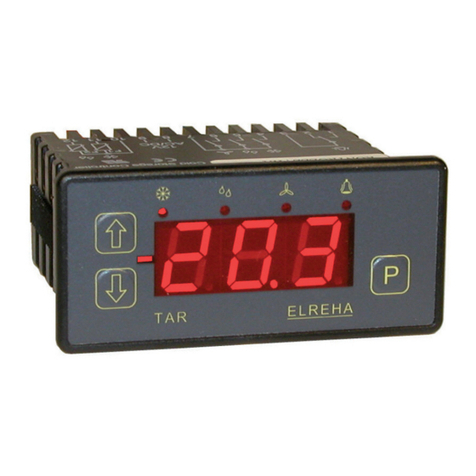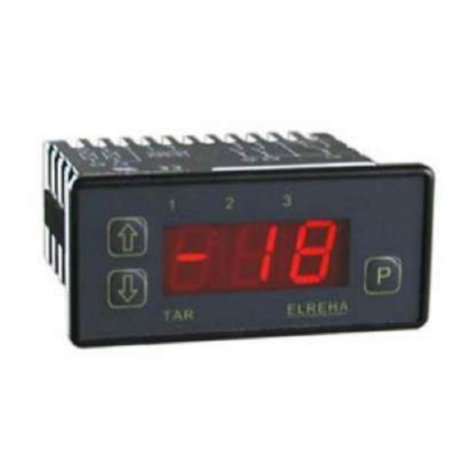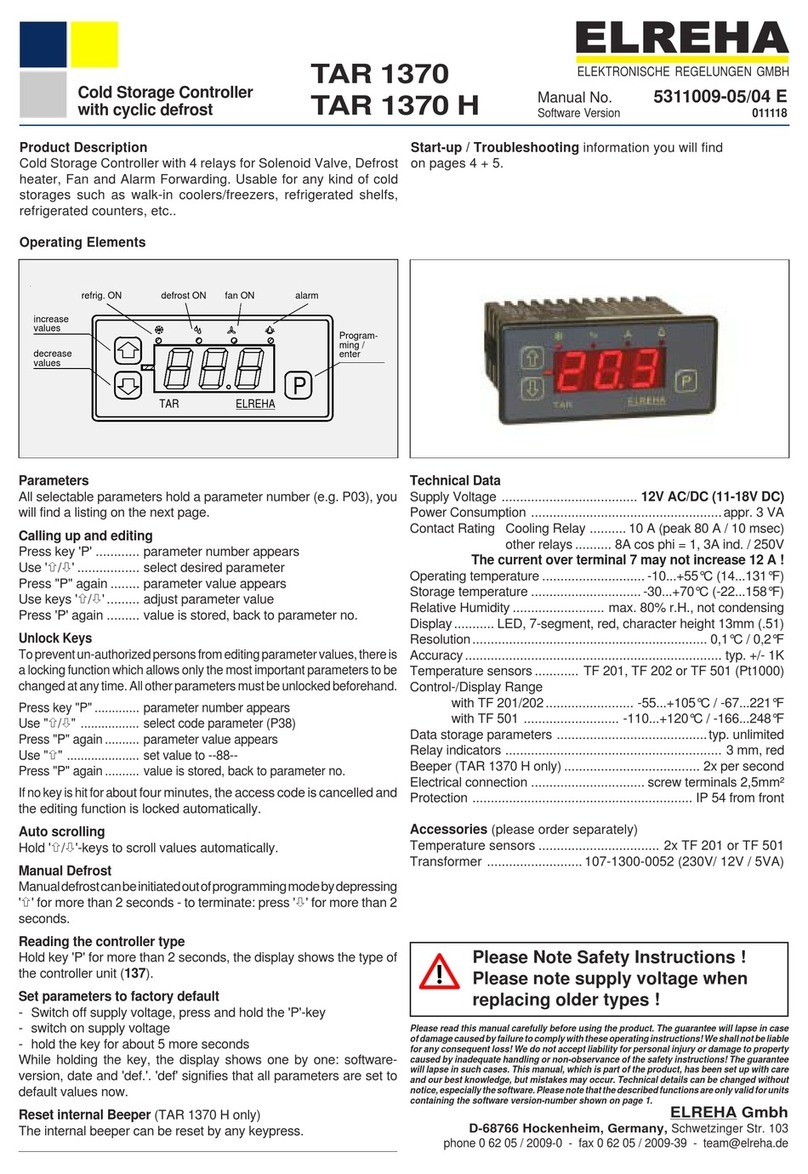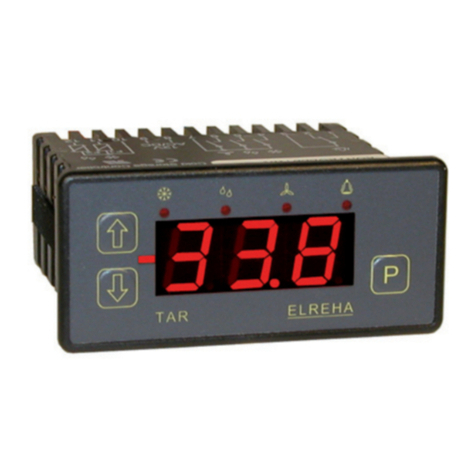Technical Manual Cold Storage Controllers TKP / TKC x130 - x140Page 4
Parameter pages
Parameters marked with "Disp. only" are for Information only and cannot
be adjusted.
The numbers in column "Level" show the user level, where this
parameters are displayed.
Actual Values Disp
Level
Range Factory setting
only
sensor 1 xxxxxxx........................... 1..... Temperature at this sensor, range -100/+100°C, calibration range here is +/- 10K .............. calibr. = 0
xindicates the function assigned to this sensor: Rx = control sensor x,
Wx = alarm sensor x, DO = display only sensor, wx = defrost demand sensor warm x,
cx = defrost demand sensor cold x, Dxy = evap sensor, circuit x / no.y
sensor 2........................................ 1..... dto. ........................................................................................................................................ calibr. = 0
sensor 3........................................ 1..... dto. ........................................................................................................................................ calibr. = 0
sensor 4........................................ 1..... dto. ........................................................................................................................................ calibr. = 0
sensor 5........................................ 1..... dto. ........................................................................................................................................ calibr. = 0
sensor 6........................................ 1..... dto. ........................................................................................................................................ calibr. = 0
sensor 7........................................ 1..... virtual actual value, composed of actual temperature values and adjustable quantifying
run time refr. 1 ...................X........ 1..... refrigeration runtime today .................................................................................................... 00:00
up to
run time refr. 4 ...................X........ 1.................................................................................................................................................... 00:00
door open 1 .......................X........ 1..... total door open time today .................................................................................................... 00:00
up to
door open 4 .......................X........ 1.................................................................................................................................................... 00:00
rem. door open 1 ............... X........ 2..... remaining time before alarm .................................................................................................
up to ("---" = door closed)
rem. door open 4 ............... X........ 2..... h:min:sec...............................................................................................................................
remain alm delay ............... X........ 2..... remaining time before temperature alarm................................................................................
remain defr time.................X........ 2..... remaining defrost time in mm:ss ...........................................................................................
rem. defr pause 1 ..............X........ 2..... h:min:sec...............................................................................................................................
up to
rem. defr pause 4 ..............X........ 2....................................................................................................................................................
remain fandelay 1..............X........ 2..... h:min:sec...............................................................................................................................
up to
remain fandelay 4..............X........ 2....................................................................................................................................................
rem compr pause1.............X........ 2..... h:min:sec...............................................................................................................................
up to
rem compr pause4.............X........ 2....................................................................................................................................................
rem strt sec ch(ain)............ X........ 2..... h:min:sec
rem chck defrdem.............. X........ 2..... min:sec.................................................................................................................................. 00:00:00
dem defr stored .................X........ 2..... yes, no .................................................................................................................................. no
solenoid valve.................... X........ 2..... enabled, off
status.................................X........ 1..... off circuit X
night settings .....................X........ 1..... day, night
runtime relay 1.............................. 2..... h:m:s (resettable only) .......................................................................................................... 00:00:00
up to
runtime relay 6.............................. 2.................................................................................................................................................... 00:00:00
analog value ......................X........ 1..... output is X% of the selected range
OC1 OC2 OC3 OC4..........X........ 1..... voltage at this digital inputs
relay status ........................X........ 1..... state of relays 1-6 (1=ON/avtivated, 0=OFF/de-activated)
Setpoint Page Level Range Factory setting
setpoint layer ...............................1 .............. 1, 2 ......................................................................................................................................1
setpoint Ch 1 ...............................1 .............. -50/+50°C............................................................................................................................ -20°C
setpoint Ch 2 ...............................1 .............. -50/+50°C............................................................................................................................ -20°C
setpoint Ch 3 ...............................1 .............. -50/+50°C............................................................................................................................ -20°C
setpoint Ch 4 ...............................1 .............. -50/+50°C............................................................................................................................ -20°C
2nd setp Ch 1 ..............................1 .............. -50/+50°C............................................................................................................................-20°C
2nd setp Ch 2 ..............................1 .............. -50/+50°C............................................................................................................................-20°C
2nd setp Ch 3 ..............................1 .............. -50/+50°C............................................................................................................................-20°C
2nd setp Ch 4 ..............................1 .............. -50/+50°C............................................................................................................................-20°C
alt setp Ch 1 ................................1 .............. -50/+50°C............................................................................................................................ -20°C
alt setp Ch 2 ................................1 .............. -50/+50°C............................................................................................................................ -20°C
alt setp Ch 3 ................................1 .............. -50/+50°C............................................................................................................................ -20°C
alt setp Ch 4 ................................1 .............. -50/+50°C............................................................................................................................ -20°C
alt 2nd setp Ch 1 .........................1 .............. -50/+50°C............................................................................................................................ -20°C
alt 2nd setp Ch 2 .........................1 .............. -50/+50°C............................................................................................................................ -20°C
alt 2nd setp Ch 3 .........................1 .............. -50/+50°C............................................................................................................................ -20°C
alt 2nd setp Ch 4 .........................1 .............. -50/+50°C............................................................................................................................ -20°C
warning offset ..............................2 .............. 0...50K (relative to the active setpoint) ............................................................................... 7 K
alt warn offset ..............................2 .............. 0...50K (relative to the active setpoint) ............................................................................... 7 K
warn low limit...............................2 .............. -50/+50°C (absolute value, threshold for undertemperature limitation/alarm) ................... - 22°C
Cannot be switched OFF.
alt warn low lim............................2 .............. -50/+50°C (dto.) ..................................................................................................................- 22°C
hysteresis ....................................2 .............. 0,1...20K.............................................................................................................................. 2 K
PID propor band ..........................2 .............. 0,1...30K.............................................................................................................................. 4 K
PID integr time.............................2 .............. off, 00:00....10:00 min:sec................................................................................................... 10 sec.
PID attack time ............................2 .............. off, 00:00.....00:10 min:sec.................................................................................................. off
PID delay.....................................2 .............. off, 0,1.....10 sec. ................................................................................................................off
opto->analog val..........................2 .............. 0,0...100,0 %, voltage/current from analog output with activated digital (OC-) input.......... 0%
fan start delay..............................2 .............. 0:00:00.....0:30:00 (h:min:sec, freeze-on time) .................................................................. 0:05:00
fan off delay.................................2 .............. 00:00.....30:00 min:sec .......................................................................................................00:00
warning delay ..............................2 .............. 0:00:00.....2:00:00 (h:min:sec) ............................................................................................0:45:00
cooling limit..................................2 .............. 0:00.....23:59 (h:min), off..................................................................................................... off
door time limit ..............................2 .............. 0:00.....23:59 (h:min), off..................................................................................................... off
refrDlyAftMnsOff..........................2 .............. 0...30 min ............................................................................................................................ 0 min
compr. pause ...............................2 .............. 00:00.....30:00 hh:mm .........................................................................................................00:00
OC inp alm delay.........................2 .............. 00:00.....02:00 hh:mm.........................................................................................................00:05
door alm delay.............................2 .............. 00:01.....04:00 hh:mm.........................................................................................................00:05
sec chain delay............................2 .............. 00:00.....01:00 min:sec ....................................................................................................... 01:00
